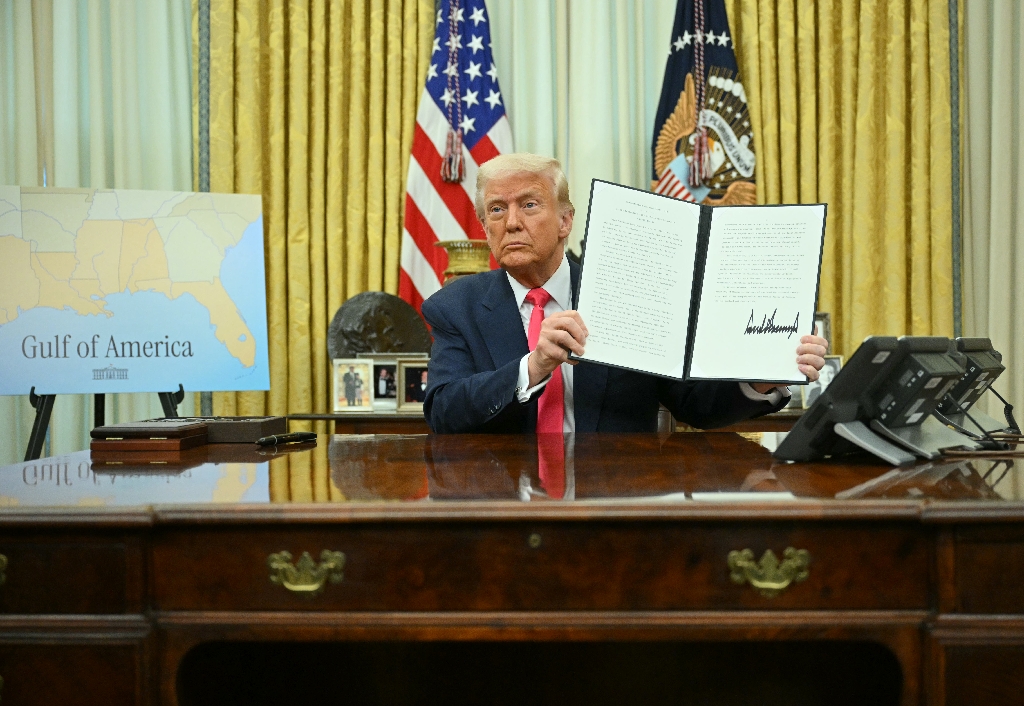(AFP) – Storm-battered Florida girded Tuesday for a direct hit from Hurricane Milton, a monster weather system threatening catastrophic damage and forcing President Joe Biden to postpone a major overseas trip. As the second huge hurricane in as many weeks rumbled toward the US state’s battered west coast, a sense of looming catastrophe spread as people raced to board up homes and evacuate.
As of Tuesday morning, Milton was generating maximum sustained winds of 145 mph (230 kph) and the threat of as much as 15 feet of storm surge, the National Hurricane Center said, calling it “extremely dangerous,” and urging people to heed evacuation orders. The Category 4 hurricane was tracking just north of Mexico’s Yucatan peninsula. After weakening from a maximum Category 5 overnight, it is forecast to make landfall Wednesday night in Florida as a Category 3 storm and remain powerful as it churns across the state.
At a press conference Tuesday, Governor Ron Santis ticked off town after town and county after county that are in danger. “Basically the entire peninsula portion of Florida is under some type of either a watch or a warning,” he said. The mayor of Tampa, a metropolitan area of three million that was hit hard last month by Hurricane Helene, was blunt in her assessment. “Helene was a wake-up call. This is literally catastrophic,” Mayor Jane Castor said on CNN. “I can say this without any dramatization whatsoever: If you choose to stay in one of those evacuation areas, you are going to die.”
Biden postponed a trip to Germany and Angola — he had been due to leave Thursday — to oversee the federal response, as storm relief efforts have become a political battleground ahead of the presidential election on November 5. Republican candidate Donald Trump has tapped into frustration about the emergency response after Helene and fueled it with disinformation, falsely claiming disaster money had been spent instead on migrants. His Democratic rival Kamala Harris criticized Trump as “extraordinarily irresponsible.”
The risks posed by Milton were underlined by one Florida TV meteorologist who choked back tears as he talked about how Milton had intensified rapidly from a Category 1. “I apologize,” weatherman John Morales said, as he surveyed the data. “This is just horrific.” In a scene of frantic preparation repeated all over Florida, dozens of cars lined up at a sports facility in Tampa to pick up sandbags and protect their homes from flooding.
John Gomez, 75, ignored official advice and traveled all the way from Chicago to try to save a second house he has in Florida. “I think it’s better to be here in case something happens,” Gomez said as he waited in line. “If I am in Chicago and something happens, I can’t do anything.” The National Weather Service said Milton could be the worst storm to hit the Tampa area in more than 100 years.
Scientists say global warming has a role in these intense storms as warmer ocean surfaces release more water vapor, providing additional energy for storms, which intensifies their winds. Communities hit by the deadly Hurricane Helene, which slammed Florida late last month, have rushed to remove debris that could become dangerous projectiles as Milton approaches. In Mexico’s Yucatan, workers boarded up glass doors and windows, fishermen hauled boats ashore, and schools were suspended.
In the southeastern United States, emergency workers are still struggling to provide relief after Helene, which killed at least 230 people across several states. It hit the Florida coastline on September 26 as a major Category 4 hurricane, causing massive flooding in remote inland towns in states further north, including North Carolina and Tennessee. Helene was the deadliest natural disaster to hit the US mainland since 2005’s Hurricane Katrina, with the death toll still rising.
– Gerard Martinez and Gianrigo Marletta
© 2024 AFP




